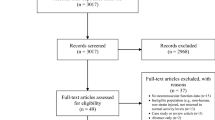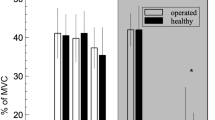Summary
A proliferation of the research analysis and clinical use of electromyostimulation has occurred in sports medicine in the last decade. This manuscript will review the important findings from a clinical perspective. Specifically, this article will address the advantages of electromyostimulation over voluntary exercise indicating its greater effectiveness in the early period of rehabilitation when reflex inhibition is dominant. Other advantages of electromyostimulation include its: usefulness in training one component of an agonist muscle group; effectiveness during joint immobilisation; and possible role in altering spe- cific muscle fibre types and enzymes.
In order to facilitate the use of electromyostimulation a number of factors require consideration including proper selection of stimulus parameters, joint position and elec- trode size, type and placement. In addition, the research findings relative to the use of electromyostimulation at different stages of recovery as well as the concern of whether electromyostimulation should be used with or without voluntary activation of the muscle are addressed.
There have been few clinical studies of the use of electromyostimulation after peripheral joint injury. The studies that have been performed focus primarily on quadriceps femoris rehabilitation after knee injury and these were classified according to diagnostic groups and discussed in this article. Finally, directions for future research are described with the hope that the great scientific effort displayed to date will be continued.
Similar content being viewed by others
References
Alon G. High voltage stimulation: effects of electrode size on basic excitatory responses. Physical Therapy 65; 890–895, 1985
Arviddson I, Eriksson E, Haggmark T, Johnson RJ. Isokinetic thigh muscle strength after ligament reconstruction in the knee joint: results from a 5–10 year follow-up after reconstructions of the anterior cruciate ligament in the knee joint. International Journal of Sports Medicine 2: 7–11, 1981
Bartelt LA, Burkett LN. The effectiveness of isokinetic and electrical stimulation training on strength development. International Journal of Sports Medicine 5: 164, 1984
Benton LA, Baker LL, Bowman BR, Waters RL. Functional electrical stimulation: a practical clinical guide, Rancho Los Amigos Hospital, 1981
Bohannon RW. Effect of electrical stimulation to the vastus medialis muscle in a patient with chronically dislocating patellae. Physical Therapy 63: 1445–1447, 1983
Currier DP, Mann R. Muscular strength development by electrical stimulation in healthy individuals. Physical Therapy 63: 915–921, 1983
Curwin S, Stanish WD, Valiant G. Clinical applications and biochemical effects of high frequency electrical stimulation. Canadian Athletic Therapists Association Journal 6: 15–16, 1980
Davies GJ. A compendium of isokinetics in clinical usage, 2nd ed., p. 3, S and S Publishers, La Crosse, 1984
De Domenico G, Strauss GR. Maximum torque production in the quadriceps femoris muscle group using a variety of electrical stimulators. Australian Journal of Physiotherapy 32: 51–56, 1986
Delitto A, Rose SJ. Electrical stimulation of hamstrings in a patient with anterior cruciate ligament insufficiency: a single case design. Physical Therapy 66: 804, 1986
Eriksson E. Sports injuries of the knee ligaments: their diagnosis, treatment, rehabilitation and prevention. Medicine and Science in Sports 8: 133–144, 1976
Eriksson EJ, Haggmark T. Comparison of isometric muscle training and electrical stimulation supplementing isometric muscle training in the recovery after major knee ligament surgery. American Journal of Sports Medicine 7: 169–171, 1979
Evans RT, Stanish WD. Transcutaneous faradic stimulation in the prevention of submaximal heart rate elevations at immobilized limbs: a preliminary report. Australian Journal of Sports Medicine 14: 27–34, 1982
Fahey TD, Harvey M, Schroeder RV, Ferguson F. Influence of sex differences and knee joint position on electrical stimulation modulated strength increases. Medicine and Science in Sports and Exercise 17: 144–147, 1985
Gerber C, Hoppeler H, Claasen H, Robotti G, Zehnder R, et al. The lower-extremity musculature in chronic symptomatic instability of the anterior cruciate ligament. Journal of Bone and Joint Surgery 67-A: 1034–1043, 1985
Godfrey CM, Jayawardena H, Quance TA, Welsh P. Comparison of electrical stimulation and isometric exercise in strengthening quadriceps muscle. Physiotherapy Canada 31: 265–267, 1979
Gould N, Donnermeyer D, Gammon GG, Pope M, Ashikaga T. Transcutaneous muscle stimulation to retard disuse after open menisectomy. Clinical Orthopaedics and Related Research 178: 190–197, 1983
Gregor RJ, Edgerton VR, Perrine JJ, Campion DS, De Bus D. Torque velocity relationships and muscle fibre composition in elite female athletes. Journal of Applied Physiology 47: 388–392, 1979
Grimby G, Nordwall A, Hulten B, Henriksson KG. Changes in histochemical profile of muscle after long term electrical stimulation in patients with idiopathic scoliosis. Scandinavian Journal of Rehabilitation Medicine 17: 191–196, 1985
Haggmark R, Eriksson E. Cylinder or mobile cast brace after knee ligament surgery. American Journal of Sports Medicine 7: 48–56, 1979
Haggmark R, Jansson E, Eriksson E. Fiber type area and metabolic potential of the thigh muscle in man after knee surgery and immobilization. International Journal of Sports Medicine 2: 12–17, 1981
Halbach JW, Strauss D. Comparison of electromyostimulation to isokinetic training in increasing power of the knee extensors. Journal of Orthopaedic and Sports Physical Therapy 2: 20–24, 1980
Halkjaer-Kristensen J, Ingemann-Hansen T. Fibre recruitment pattern in the quadriceps muscle group during percutaneous electrical stimulation of the femoral nerve in man. In Morecki et al. (Eds) Biomechanics VII-A, pp. 307–311, University Park Press, Baltimore, 1981
Hollmann W, Hettinger T. Sportsmedizin-Arbeits und Trainings-grunlagen, F.K. Schattauer Verlag, Stuttgart, 1976. As reported in Astrand PO, Rodahl K. Textbook of work physiology. 2nd ed., p. 403, McGraw Hill, New York, 1977
Horodyski MB, Sharp RL. Effects of electrical muscle stimulation on subjects with patellofemoral pain syndrome. Medicine and Science in Sports and Exercise 17: 255, 1985
Houston ME, Garrance BW, Wight RI. Metabolic effects of two frequencies of short-term surface electrical stimulation on human muscle. Canadian Journal of Physiology and Pharmacology 60: 727–731, 1982
Huskisson EC. Visual analogue scales. In Melzcack (Ed.) Pain measurement and assessment, Raven Press, New York, 1983
Ikai M, Yabe K, Iischii K. Musekraft muskulare Ermudung bei wilkorificher anspannungelektrischer Reizung des Muskels. Sportarzt und Sportsmed 5: 197–204, 1967
Ivy JL, Withers RT, Brose G, Maxwell BD, Costili DL. Isokinetic contractile properties of the quadriceps with relation to fiber type. European Journal of Applied Physiology 47:247–255, 1981
Johnson DH, Thurston P, Ashcroft PJ. The Russian technique of faradism in the treatment of chondromalacia patellae. Physiotherapy Canada 29: 266–268, 1977
Kennedy JC, Alexander IJ, Hayes KC. Nerve supply of the human knee and its functional importance. American Journal of Sports Medicine 10 (6): 329–335, 1982
Kots VM. Electrostimulation (unpublished notes from lectures and laboratory sessions), interpreted into English by Dr. Babkin and Nickolas Timtsenko at the Canadian-Soviet Exchange Symposium on electrostimulation of skeletal muscles, Montreal, Concordia University, Dec 6–15, 1977
Kots VM, Chuilon VA. The training of muscular power by method of electrical stimulation, State Central Institute of Physical Culture, Moscow, 1975
Kramer J, Lindsay D, Magee D, Mendryk S, Wall T. Comparison of voluntary and electrical stimulation contraction torques. Journal of Orthopaedic and Sports Physical Therapy 5: 324–331, 1984
Lainey CG, Walmsley RP, Andrew GM. Effectiveness of exercise alone versus exercise plus electrical stimulation in strengthening the quadriceps muscle. Physiotherapy Canada 35: 5–11, 1983
Leo K. Conductive adhesive vs carbon/gel electrodes in neuromuscular stimulation: a comparative study. Physical Therapy 66: 784–785, 1986
Le Veau B, Rogers C. Selective training of the vastus medialis muscle using EMG biofeedback. Physical Therapy 60: 1410–1415, 1980
Liu HI, Currier DP. Minimum number of repetitions for augmenting the tension developing capacity of muscle by electrical stimulation. Physical Therapy 65: 683, 1985
Lloyd T, De Domenico G, Strauss G, Singer K. A review of the use of electro-motor stimulation in human muscles. Australian Journal of Physiotherapy 32: 18–30, 1986
McNeal DR, Baker LL, Hammer D, Martin C, Mori K, et al. Optimizing electrode placements and joint angle for ES programs at the knee. Physical Therapy 66: 807, 1986
Mohr T, Danzi L, Akers TK, Landry R. The effect of high volt galvanic stimulation on quadriceps femoris muscle torque. Journal of Orthopaedic and Sports Physical Therapy 7: 314–318, 1986
Morrissey MC, Brewster CE. Hamstring weakness after surgery for anterior cruciate injury. Journal of Orthopaedic and Sports Physical Therapy 7: 310–313, 1986
Morrissey MC, Brewster CE, Shields CL, Brown M. The effects of electrical stimulation on the quadriceps during postoperative knee immobilization. American Journal of Sports Medicine 13: 40–45, 1985
Muller AE. Training muscle strength. Erogonomics 2: 216–222, 1959
Nelson HE, Smith MB, Bowman BR, Waters RL. Electrode effectiveness during transcutaneous motor stimulation. Archives of Physical Medicine and Rehabilitation 61: 73–77, 1980
Odia GI. Comparison of torque produced by voluntary contraction and electro-stimulation of the quadriceps femoris. Proceedings of the 9th Conference of the World Confederation of Physiotherapy, Stockholm, pp. 797–800, 1983
Owens J, Malone T. Treatment parameters of high frequency electrical stimulation as established on the ES180. Journal of Orthopaedic and Sports Physical Therapy 4: 162–168, 1983
Perry J, Norwood L, House K. Knee posture and biceps and semimembranous muscle action in running and cutting (an EMG study). Transactions of the 23rd Annual Meeting, Orthopaedic Research Society 2: 258, 1977
Poortman M, Taylor AW. Human skeletal muscle morphology after electrical stimulation. Medicine and Science in Sports 11: 114, 1979
Portney LG, Sullivan PE, Danieli JL. EMG activity of vastus medialis obliques and vastus lateralis in normals and patients with patellofemoral arthralgia. Physical Therapy 66: 808, 1986
Reisman MA. A comparison of electrical stimulators in eliciting muscle contractions. Physical Therapy 64: 751, 1984
Selkowitz DM. Improvement in isometric strength of the quadriceps femoris following training with electrical stimulation. Physical Tehrapy 65: 186–196, 1985
Singer KP. The influence of unilateral electrical muscle stimulation on motor unit activity patterns in atrophic human quadriceps. Australian Journal of Physiotherapy 32: 31–37, 1986
Soo CL, Currier DP. Minimum training dosage for augmenting the tension developing capacity of muscle by electrical stimulation. Physical Therapy 65: 683, 1985
Stanish WD, Valiant GA, Bonea A, Beicastro AN. The effects of immobilization and electrical stimulation on muscle glycogen and myofibrillar ATPase. Canadian Journal of Applied Sports Science 7: 267–271, 1982
Stefanovska A, Vodovnik L. Change in muscle force following electrical stimulation: dependence on stimulation waveform and frequency. Scandinavian Journal of Rehabilitation Medicine 17: 141–146, 1985
Stokes M, Young A. The contribution of reflex inhibition to arthrogenous muscle weakness. Clinical Science 67: 7–14, 1984
Stratford P. Electromyography of the quadriceps femoris muscles in subjects with normal knees and acutely effused knee. Physical Therapy 62: 279–283, 1981
Strauss GR, De Domenico G. Torque production in human upper and lower limb muscles with voluntary and electrically stimulated contractions. Australian Journal of Physiotherapy 32: 38–49, 1986
Thorstensson A, Grimby G, Karlsson J. Force-velocity relations and fiber composition in human knee extensor muscles. Journal of Applied Physiology 40: 12–16, 1976
Thorstensson A, Larsson L, Tesch P, Karlsson J. Muscle strength and fibre composition in athletes and sedentary men. Medicine and Science in Sports 9: 26–30, 1977
Tihanyi J, Apor P, Fekete G. Force-velocity-power characteristics and fiber composition in human knee extensor muscles. European Journal of Applied Physiology 48: 331–343, 1982
Walmsley RP, Letts G, Vooys J. A comparison of torque generated by knee extension with a maximal voluntary muscle contraction vis-a-vis electrical stimulation. Journal of Orthopaedic and Sports Physical Therapy 6: 10–17, 1984
Williams RA, Morrissey MC, Brewster CE. The effect of electrical stimulation on quadriceps strength and thigh circumference in menisectomy patients. Journal of Orthopaedic and Sports Physical Therapy 8: 143–146, 1986
Williams JGP, Street M. Sequential faradism in quadriceps rehabilitation. Physiotherapy 62: 252–254, 1976
Wise HH, Giebert IM, Kates JL. EMB biofeedback as treatment for patellofemoral pain syndrome. Journal of Orthopaedic and Sports Physical Therapy 6: 95–103, 1984
Yates JW, Kamon E. A comparison of peak and constant angle torque-velocity curves in fast and slow twitch populations. European Journal of Applied Physiology 51: 67–74, 1983
Author information
Authors and Affiliations
Rights and permissions
About this article
Cite this article
Morrissey, M.C. Electromyostimulation from a Clinical Perspective. Sports Medicine 6, 29–41 (1988). https://doi.org/10.2165/00007256-198806010-00004
Published:
Issue Date:
DOI: https://doi.org/10.2165/00007256-198806010-00004




